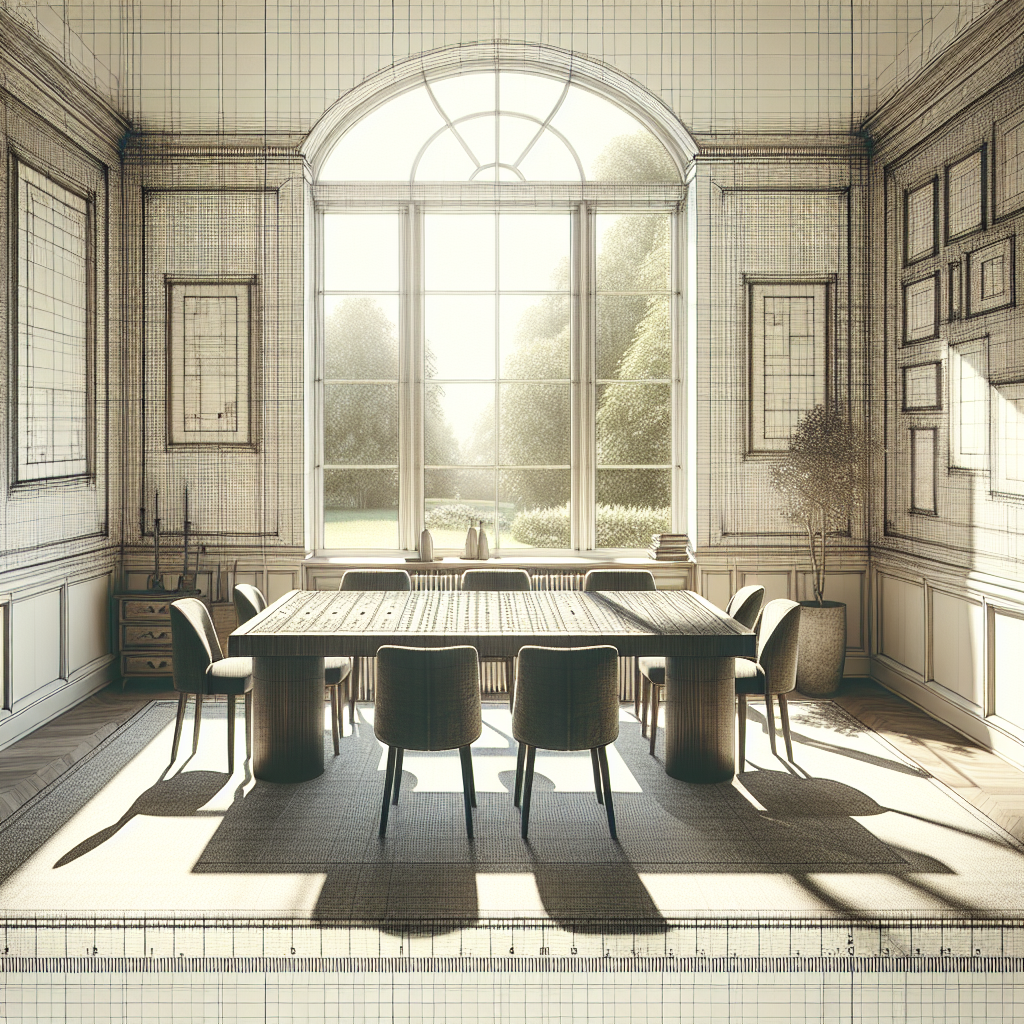A Guide to Choosing the Perfect Dining Table Size
A Guide to Choosing the Perfect Dining Table Size


Selecting the perfect dining table size that fits your dining space is as crucial as picking the table style that suits your aesthetics. Your choice directly influences the dynamics of your dining area or kitchen. So, how does one determine the right size dining table? From small dining tables to giant dining tables, this decision could feel quite overwhelming. This comprehensive guide aims to break down the various factors you need to consider when calculating your ideal size dining table. Let’s delve in and help you make an informed decision.
The importance of the right dining table size
The right size dining table is pivotal in setting the tone for your dining area. It balances aesthetics, functionality, and comfort—ensuring everyone can sit, eat, and move around easily. An oversized table can make your dining space appear cramped, inhibiting movement, while an undersized one may look out of place and unwelcoming. Hence, calculating the best-fit dining table size will perfectly proportion your table with the rest of your room, ensuring pleasurable dining experiences in relation to the overall space.
Factors to consider while choosing a dining table size
Selecting your dining table size means considering several aspects. Assess your available floor space and the room dimensions, allowing generous room for dining chairs and smooth navigation around your table. Also, ponder over your expected seating capacity. How many people will be dining regularly, and how many during special occasions? Next, consider the table’s role. Will it only be used for dining or double up as a workspace? Additionally, think about how much room you need for dining room storage ideas, a buffet, extra seating, or even a home bar. Addressing these essential questions can aid in deciding the right dining table size better suited catering to your specific needs.
Understanding Dining Table Sizes
Dining tables come in various standard sizes categorised based on seater capacity. These dimensions are mainly suggested estimates and may vary across different furniture styles and brands. Understanding these typical dining table dimensions can help you narrow down your options and make an informed selection.
Standard dining table dimensions
When setting out to choose an ideal table size, understanding the standard dimensions is crucial. Here is a useful guide to assist this choice:
| Number of Seats | Ideal Table Size |
| 2 seater | 60cm x 70cm (length x width) |
| 4 seater | 120cm x 70cm |
| 6 seater | 180cm x 80cm |
| 8 seater | 220cm x 90cm |
| 10 seater | 270cm x 90cm |
| 12 seater | 330cm x 90cm |
Remember, the given dimensions are merely basic standards. The exact skeleton dimensions can deviate depending on table shape, design, and brand specifications.
Dining table size based on room dimensions
Calculating the ideal dining table size also depends on your available room space. Here's a handy guide mapping the relationship between room and dining table dimensions:
| Dining Room Size | Ideal Table Size |
| 3m x 3m (approx.) | 121 cm x 70cm (4 seater square/round table) |
| 4m x 3m (approx.) | 180cm x 80cm (6 seater rectangle/oval table) |
| 5m x 4m (approx.) | 220cm x 90cm (8 seater rectangle/oval table) |
| 6m x 5m or larger | 270cm x 90cm (10 seater rectangle/oval table) |
These estimates assume at least 90cm of walk-around space and are a quick guide, not a stringent rulebook. Your furniture choice will eventually align with your personal preferences and space functionalities.
Choosing the Right Dining Table Shape
Choosing the right dining table shape is as significant as determining its size. Shape not only influences the aesthetic appeal of your dining space but also contributes to fluid circulation and comfortable seating. The four primary table shapes—rectangular, round, square, and oval—each offer a unique blend of advantages and fit differently within varied space dimensions, with rectangular tables being ideal for rectangular rooms.
Rectangular dining tables
Rectangular dining tables are classic, user-friendly, and compatible with diverse dining spaces. Appreciated for their formal vibes, these tables effortlessly accommodate more people, especially if you opt for an extendable design. Rectangular tables, also known as rectangle tables, are particularly apt if you have a long, narrow room or want to seat a large number of guests. However, they may not allow for intimate, table-wide conversations given their form.
Round dining tables
Round dining tables evoke a congenial, cosy atmosphere conducive to close-knit gatherings. Typically favoured for smaller rooms, these tables present a more open look and assist in maintaining smooth traffic flow. Despite their compact design, they can comfortably seat numerous people—especially pedestal base designs. Round tables, however, might make reaching for dishes challenging and may not fit neatly against the wall or in square room corners.
Square dining tables
Square dining tables are ideal for tiny spaces and smaller, symmetrical rooms. They offer an intimate dining experience, being perfect for couples or families of four. However, larger square tables might make dish access difficult and consume substantial space. Their sharp edges could also deter movement around the table in confined spaces.
Oval dining tables
Oval dining tables combine the linear layout of rectangular tables and the intimate, space-efficient ergonomics of round ones. Ideal for large family gatherings, these tables spruce up your dining area by adding a touch of elegance and lending an illusion of space. Notably, oval tables constructed with double-pedestal bases provide ample legroom allowing for higher seating capacity.
Calculating Seating Capacity and Spacing
The seating capacity and spacing of a dining table depend on its size and shape. As hosts, you'd want your guests to have ample elbow room and personal space, so they are not crammed together uncomfortably. Furthermore, when considering the seating capacity, don't forget to account for additional guests you may host on special occasions. Adjustability is key to maintaining balance between everyday functionality and occasional entertainment needs. This may include adding extra seating at the head and end of the table to accommodate more guests.
Extendable Dining Tables
Investing in an extendable dining table can be a life-saver if your guest list increases or space requirements change. These versatile tables offer flexible seating arrangements by expanding to accommodate more people. From compact round styles to generous extendable designs, such tables are a must for those who love entertaining large groups. Furthermore, when not in use, these tables can revert to their usual size, conserving valuable space
